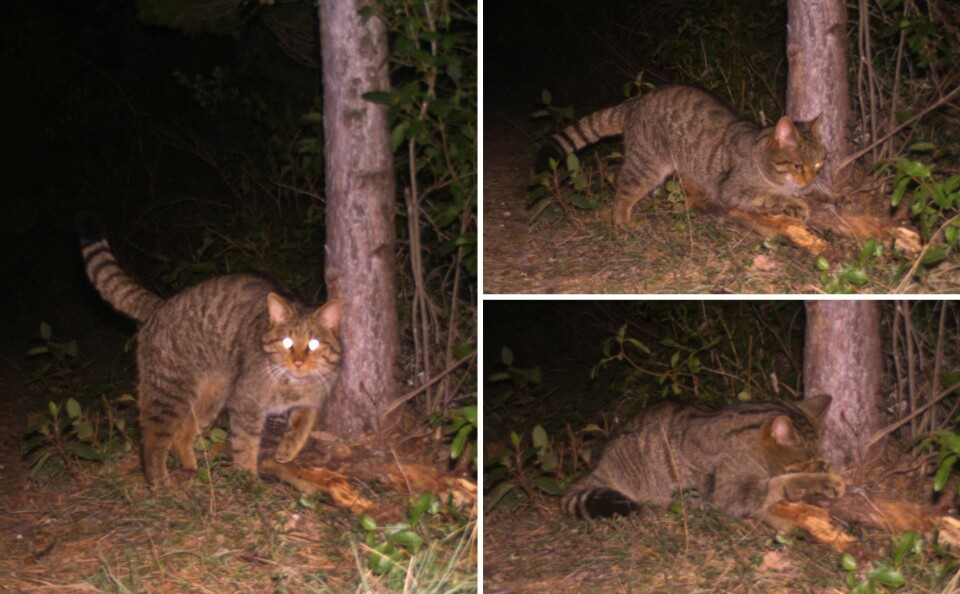-
Duck Cold! Four French phrases to use when it is freezing outside
We remind you of French expressions to use to describe the drop in temperature
-
When and why do we say le moral dans les chaussettes?
We explore this useful expression that describes low spirits
-
The origins and meaning of tirer les marrons du feu
As Christmas approaches, we look at a phrase to describe someone who takes advantage of a situation
Hidden cameras and DNA from fur confirm wildcats return in the Tarn
But Nature en Occitanie calls for domestic cat owners to sterilise their pets before interbreeding threatens the new wildcat population

A population of European wildcats (chats forestiers in French) has been discovered in Tarn and on the Montagne Noire range, after decades without a proven sighting.
Wildcats look similar to domestic tabby cats, but are generally bigger and stouter, with longer fur, a bushy tail and a distinctive black stripe running along their back.
Photo kickstarts project
There had been “some reports” of wildcats in the area since the 1990s and 2000s, but “no proof,” Maxime Belaud, who leads the mammal research operations of Nature en Occitanie, told The Connexion.
However, the recent emergence of a photo of what looked like a wildcat in the Martys forest (Aude) kickstarted a project led by Mr Belaud exploring the possibility of a wildcat population in Tarn.
Some 25 camera traps were set up in the Martys and Ramondens forests, along with ‘hair traps’ containing Valerian, which cats like to rub up against and which collect fur samples for DNA testing.
Land management will now cater for wildcats
Over the first six months, 400 photos and 70 fur samples were collected and examined to determine whether they did indeed belong to wildcats.
“It was only thanks to this project” that Nature en Occitanie could confirm the presence of the cats in the area, Mr Belaud said, adding that the results brought “joy and satisfaction” to the team.
“This will allow us to be more conscious of the species and its habitats within Tarn.
“Since we did not know that it was present before, we did not do anything for it, but now our forest wardens will manage woodland in a way which will help conservation efforts.”
Hybridisation is current threat
Wildcats had historically been hunted for their fur; they “went from occupying almost all of France to only inhabiting two areas in the north-east and the Pyrenees,” Mr Belaud explained.
However, they have been protected in France since 1981, and this “has really contributed to their expansion,” Mr Belaud added.
Therefore, “on a national scale I am optimistic about the future of the wildcat, but the problem is that in certain areas – such as in Tarn and on the Montagne Noire – there is such a high rate of hybridisation that I am rather pessimistic because the species could very soon disappear.”
Hybridisation occurs when a wildcat mates with a domestic cat, meaning that wildcat genes become mixed with those of other species.
Perhaps only 30% of the cats discovered in Tarn and the Montagne Noire are pure wildcats, so Nature en Occitanie is encouraging local residents to have their pet cats sterilised in order to protect the wild population.
“There is a lot of hybridisation in Tarn because there are many homes – and therefore domestic cats – in forest areas.
“In areas like the Pyrenees, which have very few humans, it happens less,” Mr Belaud said.
Appearance in the Tarn still a mystery
“We are still collecting photos and hairs because when we found the Tarn population, we saw that it belonged genetically to the Pyrenean population, so we want to understand how they moved from the Pyrenees to Tarn,” he concluded.
Related articles
Brown bear numbers growing in French Pyrenees after reintroduction
Wildlife experts have spotted golden jackals for first time in France
Video: Wild wolf spotted in Brittany for first time in 109 years
























